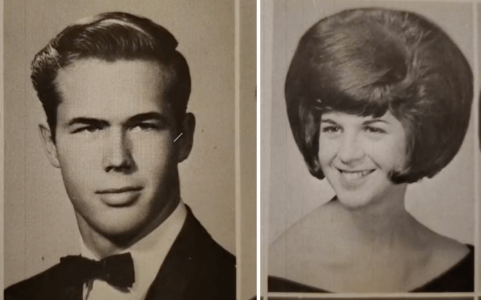Are younger generations less attractive? Facial analyst thinks so
- Replies 7
At the SDC, we believe true beauty extends far beyond mere appearances and facial features. It encompasses a person's personality, values, and inner qualities, which make them truly attractive.
However, we heard some information circulating recently from a facial analyst who believes that the attractiveness of humans may be diminishing with each new generation.
That's right, an expert says you're more attractive than your kids and grandkids. How's that for a fun fact?
Understandably, this prediction caught the attention of many.
The founder of QOVES, a facial aesthetics consultancy firm in Sydney, Shafee Hassan, addressed a follower's question about the abundance of attractive people in old high school yearbooks in a video on social media.
In the video, he delved into the idea that certain lifestyle changes and environmental influences might impact our attractiveness over time.
Hassan explained: 'The average person's face is becoming increasingly disadvantaged by modern diets, sleeping patterns, pollutants and orofacial habits creating a greater inequality in "the attractives" vs "the unattractives".'

In the video, Shafee raised an intriguing question about why teenagers in the 1950s appeared to look much older than their modern-day counterparts. To illustrate this point, he provided a visual example of a young man with distinct and attractive facial features, like a well-defined jawline and prominent cheekbones.
To explain these differences, Shafee introduced the concept of the 'functional matrix hypothesis', which was presented by orthodontist William Proffit and his colleagues in the book Contemporary Orthodontics.
This hypothesis suggests that various forces act on the face during development, influencing the way certain aspects of it, such as the upper and lower jaws, grow and form over time.
Shafee shed light on how the tongue or other forces can impact the jaw's development, potentially pushing it downwards or outwards before new bone growth takes place.
To provide a practical example, he referred to a case study involving a young girl with a sinus infection. Due to constant mouth-breathing caused by the ailment, the lack of closure in that facial area led to improper development.
Based on this information, Shafee drew a conclusion in the video. He stated that around 70% of people in the 'Western world' suffer from some form of malocclusion, such as gaps between teeth or gum recession. These conditions could contribute to the perception that faces become less attractive with each generation.
This argument is quite fascinating, but it also brings a sense of reality. The video has garnered over 2.3 million views on various social media platforms, captivating the public's attention and igniting a thought-provoking debate.
People's responses to the video were varied. Some viewers pointed out that individuals tend to appear more attractive on camera, while others relied on long-standing beauty stereotypes or considered how diverse diets might affect people's appearances.
'They look older because they have styles that we associate with grandparents, so they automatically look more mature,' one comment read.
Another added, 'Worth noting that everyone looks better on a film camera compared to an iPhone. It brings out the features and makes the face look more defined.'

Members, we're absolutely curious to know what you make of this article! Do you believe people have been losing their charm lately, or is it just too tricky to determine?
Let's also circle back to the question from earlier: do you reckon your generation is 'more attractive' than your kids' and grandkids' generations? We can't wait to hear your thoughts on this! Drop your comments in the section below—we're all ears and excited to hear what you have to say!
However, we heard some information circulating recently from a facial analyst who believes that the attractiveness of humans may be diminishing with each new generation.
That's right, an expert says you're more attractive than your kids and grandkids. How's that for a fun fact?
Understandably, this prediction caught the attention of many.
The founder of QOVES, a facial aesthetics consultancy firm in Sydney, Shafee Hassan, addressed a follower's question about the abundance of attractive people in old high school yearbooks in a video on social media.
In the video, he delved into the idea that certain lifestyle changes and environmental influences might impact our attractiveness over time.
Hassan explained: 'The average person's face is becoming increasingly disadvantaged by modern diets, sleeping patterns, pollutants and orofacial habits creating a greater inequality in "the attractives" vs "the unattractives".'

A facial analyst has detailed a theory as to why people are 'becoming less attractive'. Credit: TikTok/qovesstudio.
In the video, Shafee raised an intriguing question about why teenagers in the 1950s appeared to look much older than their modern-day counterparts. To illustrate this point, he provided a visual example of a young man with distinct and attractive facial features, like a well-defined jawline and prominent cheekbones.
To explain these differences, Shafee introduced the concept of the 'functional matrix hypothesis', which was presented by orthodontist William Proffit and his colleagues in the book Contemporary Orthodontics.
This hypothesis suggests that various forces act on the face during development, influencing the way certain aspects of it, such as the upper and lower jaws, grow and form over time.
Shafee shed light on how the tongue or other forces can impact the jaw's development, potentially pushing it downwards or outwards before new bone growth takes place.
To provide a practical example, he referred to a case study involving a young girl with a sinus infection. Due to constant mouth-breathing caused by the ailment, the lack of closure in that facial area led to improper development.
Based on this information, Shafee drew a conclusion in the video. He stated that around 70% of people in the 'Western world' suffer from some form of malocclusion, such as gaps between teeth or gum recession. These conditions could contribute to the perception that faces become less attractive with each generation.
This argument is quite fascinating, but it also brings a sense of reality. The video has garnered over 2.3 million views on various social media platforms, captivating the public's attention and igniting a thought-provoking debate.
People's responses to the video were varied. Some viewers pointed out that individuals tend to appear more attractive on camera, while others relied on long-standing beauty stereotypes or considered how diverse diets might affect people's appearances.
'They look older because they have styles that we associate with grandparents, so they automatically look more mature,' one comment read.
Another added, 'Worth noting that everyone looks better on a film camera compared to an iPhone. It brings out the features and makes the face look more defined.'
Key Takeaways
- Shafee Hassan, a facial analyst from Sydney's QOVES firm, argued that people are becoming less attractive due to modern lifestyles affecting facial development.
- In his video, Hassan suggested that factors such as diet, sleep patterns, and pollutants can negatively affect facial features, causing them to become 'less attractive'.
- The 'functional matrix hypothesis' suggests that various forces act on the face during development, influencing how certain aspects, such as the upper and lower jaws, grow and form over time.
Members, we're absolutely curious to know what you make of this article! Do you believe people have been losing their charm lately, or is it just too tricky to determine?
Let's also circle back to the question from earlier: do you reckon your generation is 'more attractive' than your kids' and grandkids' generations? We can't wait to hear your thoughts on this! Drop your comments in the section below—we're all ears and excited to hear what you have to say!







